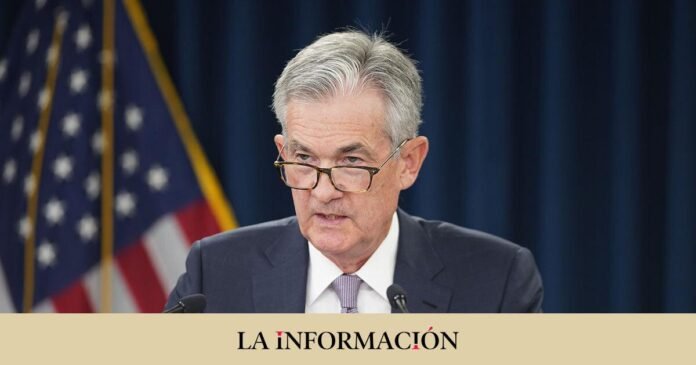At the already famous annual meeting of central bankers in Jackson Hole over the weekend, and in the midst of a context in which markets have gone from wondering how many additional rate hikes are left to trying to guess when the first ones will arrive cuts, central banks have been at pains to reiterate a hawkish stance because they want to prevent financial market conditions from easing, which would undermine efforts. To this end, bankers insist that the battle against inflation is not yet won because, although price growth is moderating, activity and especially the labor market remain surprisingly resilient, which carries risks that it could wages and service inflation is perpetuated at high levels.
Is it possible to avoid a recession despite a cycle of interest rate hikes of 400-500 basis points, one of the highest in history? In the case of the United States, today it may seem so, but only because of the exceptional nature of its fiscal position; and it is that monetary tightening, far from being accompanied by fiscal consolidation, is coexisting with fiscal deficits that in recent months, and encouraged by its industrial policy programs (Chips Act and Inflation Reduction Act), have exceeded the levels reached . During the global financial crisis of 2008.
But the case of the Eurozone is quite different. In reality, according to the latest revision of the GDP data, the region had already experienced a technical recession after its GDP registered a contraction of 0.1% quarter-on-quarter in both the fourth quarter of 2022 and the first of 2023. And although Q2 2023 GDP would have grown a healthier 0.3 qoq, actually if volatile Irish growth rates are excluded that growth rate would drop to a meager 0.1%.
In addition, the first indicators published for the third quarter of the year show a rather unfavorable evolution. In this regard, this Wednesday we knew the advanced data of the purchasing managers’ indices (PMIs) for August for the euro area, which forecast business activity. Its reading was much worse than expected, with the aggregate index falling from 48.6 to 47.0, a nearly two-year low. The average reading of 47.8 over July and August is much worse than the 52.3 recorded between April and June, and is consistent with the economy contracting by 0.3% qoq in the third quarter of 2023.
And it is that, to the weakness already shown previously by the manufacturing sector -its PMI improved in August from 42.7 to 43.7, but standing at very depressed levels-, now joins the signs of a sharp slowdown in the services sector – the August reading of the The services PMI fell to 48.3 from 50.9, its first contraction since last December.
In addition to the PMI data for the euro area as a whole, data for the bloc’s two largest economies, Germany and France, were also published. The reading for Germany, the traditional locomotive of the eurozone, was especially alarming; its composite PMI fell sharply 3.8 points to a level of just 44.7, something not seen since the global financial crisis if the peak of the pandemic is excluded.
What about inflation? Eurostat data for July showed headline inflation in the euro area easing by two tenths to 5.3% year-on-year, but core inflation appeared to be more rigid, holding at 5.5% year-on-year. But here are two considerations. First, that some statistical peculiarities (a large base effect due to the introduction of transport aid between June and August of last year, and statistical distortions linked to changes in the weights used to calculate the Eurostat harmonized index) have distorted core inflation reading up around 0.7 percentage points. And, secondly, that as I have already explained on other occasions, the core inflation reading would now be overestimating the true inflationary pressures, because this index reflects the transmission, with a certain sticker, of the previous rise in Costa Rican energy prices to the rest of the country. . of goods and services. In other words, if it hadn’t been for those effects, core inflation would probably have already peaked months ago and fallen consistently ever since.
All of this should be enough for the European Central Bank, which made its ninth consecutive rate hike in July, bringing the deposit rate to 3.75%, to stop its cycle of increases at its next meeting on September 14, even more so given the current problems that China is going through, and that threaten to export more deflation to the world economy.
The current approach of central banks to make decisions based on observed data, rather than seeking to anticipate them, has placed too much emphasis on the past as a way of understanding the future. Considering the gap between the implementation of monetary policy and its impact on the economy, to design today’s policies we must try to look more at what will happen in the future and less at what has been published about the past. This approach, based on data, already led the ECB to react late to face the rise in inflation. We hope now doesn’t mean you’re too late to stop monetary tightening! If this is not the case, we run the risk of deepening the recession without getting anything in return, because the recession is on offer

